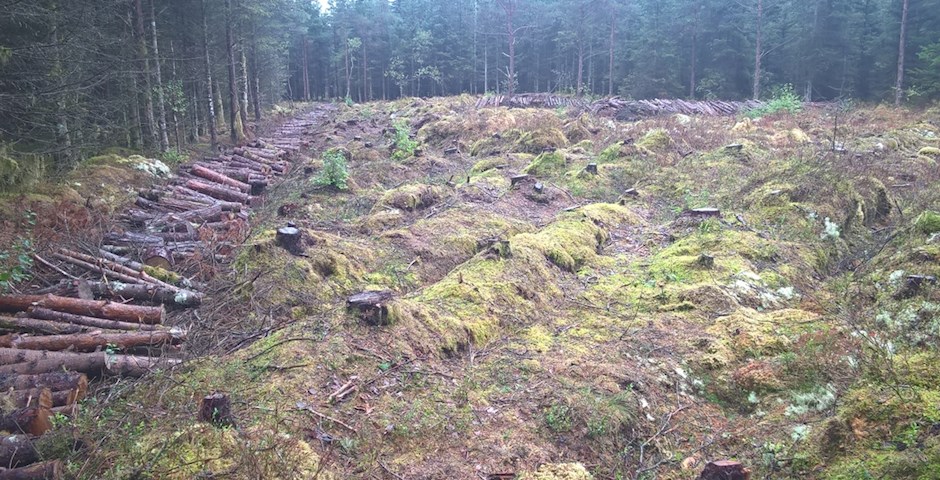
Introduction to pilot site Cors y Sarnau, Wales

Take a tour via:
Report: Restoration of a conifer plantation to lowland raised bog at Cors-y-Sarnau (main output)
Summary
Cors y Sarnau, near Bala in North Wales, has been managed by the North Wales Wildlife Trust since 1972. This former lake site is notable for its wetland habitats and their representation of the transition through mire, fen and bog vegetation into wet woodland. All of these habitats occur on deep peat deposits, with peat depths in excess of three metres in the lowest-lying areas. Due to the importance of these rare wetland habitats, Cors y Sarnau has been designated a Site of Special Scientific Interest (SSSI).
In 2014, the Wildlife Trust was able to purchase an area of conifer plantation, known as Coed Ty Uchaf, adjacent to the existing SSSI. This nearly doubled the size of the Cors y Sarnau nature reserve to over 28 hectares. Deep peat deposits – up to five metres thick – were present within the plantation, which was felled in 2016 with the ambitious aim of restoring peatland habitat.
The former conifer plantation at Coed Ty Uchaf is the focus of the Care-Peat project at Cors y Sarnau. Here, large-scale intervention will be required to create conditions which will favour the regeneration of peatland habitat. Meanwhile, ongoing habitat management will continue in the adjacent SSSI, supported by funding from Natural Resources Wales. One of the key challenges will be understanding how both halves of the reserve function as a hydrological unit, and ensuring that hydrological repair at Coed Ty Uchaf does not detrimentally impact the existing wetland habitats.
The restoration project is currently in its early stages, with the site soon to be prepared for the restoration work. In the meantime, base-line data collected just prior to the felling is being re-visited and expanded to better inform and direct habitat management. We aim to use a range of techniques to manipulate the existing habitat and set the scene for the natural regeneration of the wetland communities, such as carpets of Sphagnum mosses.
Throughout the restoration project, we will also be working with Manchester Metropolitan University to monitor greenhouse gas levels to see how quickly the site can be transformed as a carbon store. The research data collected from the site will be used to support the adoption of this and other alternative land management techniques for our peatlands.
https://www.northwaleswildlifetrust.org.uk/care-peat-cors-y-sarnau
